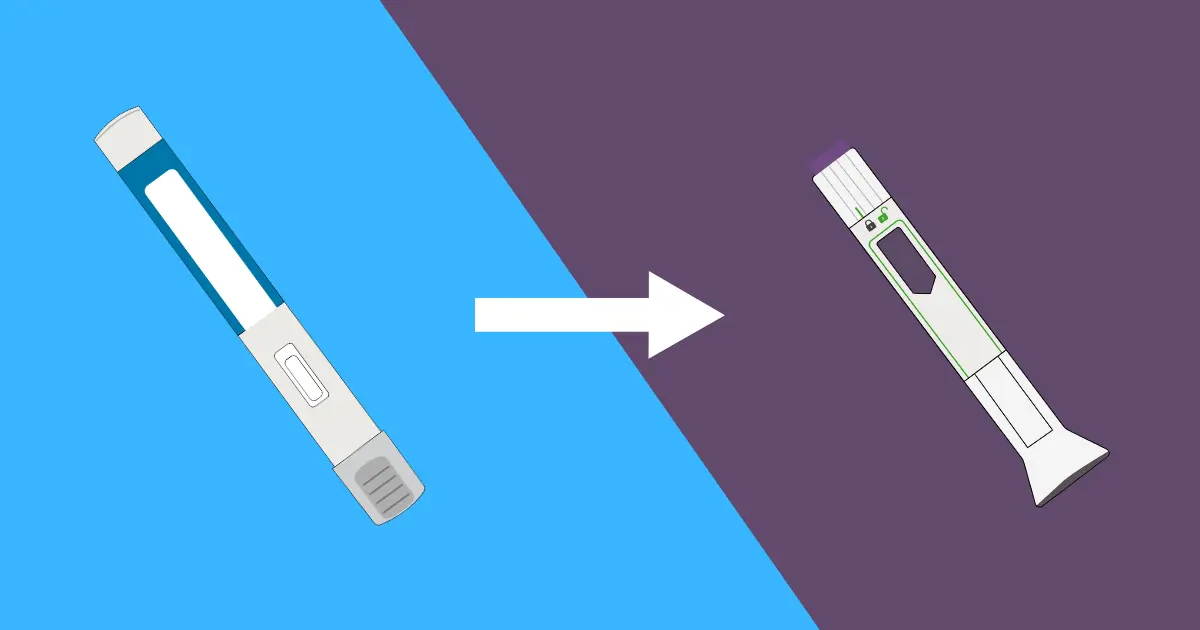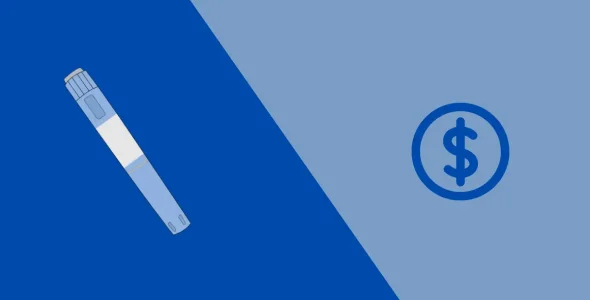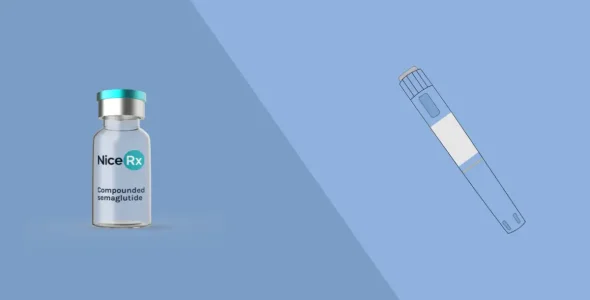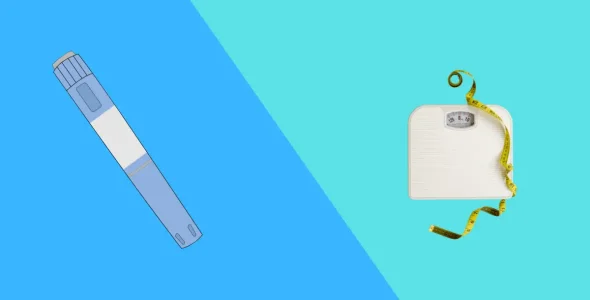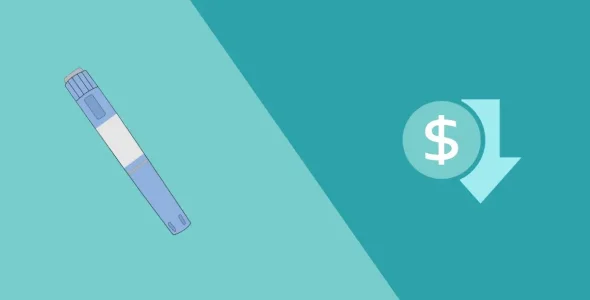Switching from semaglutide to tirzepatide dose conversion
Ready for better results? Discover why many are switching from semaglutide to tirzepatide for enhanced weight loss and blood sugar control—and what you should know before making the change.
Key highlights
- Semaglutide is a GLP-1 agonist, while tirzepatide is a dual GLP-1 and GIP receptor agonist. Both are used to promote blood sugar control and weight loss.
- Due to its dual mechanism of action, tirzepatide is more effective than semaglutide in managing type 2 diabetes and reducing body weight.
- In SARMOUNT-5 trials, tirzepatide participants lost 20.2% of body weight, while semaglutide users showed a 13.7% reduction in body weight over 72 weeks.
- Due to different dosing schedules, there is no direct conversion chart between tirzepatide and semaglutide. However, equivalent dosage charts can help determine and adjust the right dosage.
- Consult your healthcare provider to discuss whether tirzepatide is the right choice for you and get a customized treatment plan according to your BMI and blood sugar levels.
Semaglutide and tirzepatide are once-weekly injectable medications that were initially developed for type 2 diabetes. Later, they showed significant benefits for weight loss and were FDA-approved for weight management. Semaglutide is a GLP-1 receptor agonist and tirzepatide is a dual GLP-1 and GIP receptor agonist. Ozempic, Wegovy, and Rybelsus are brand names of semaglutide. Tirzepatide comes with two brand names, Zepbound and Mounjaro.
Currently, there is an increasing trend of switching between these medications for potentially improved outcomes. Tirzepatide has shown greater efficacy than semaglutide due to its dual action on glucagon-like peptide-1 and glucose-dependent insulinotropic peptide receptors. Before making a switch, careful consideration is needed. You should know how to safely switch these medications and what the pros and cons of switching from semaglutide to tirzepatide are.
This article provides a comprehensive guide for individuals considering or undergoing a switch from semaglutide to tirzepatide and offers practical guidance and insights beyond the currently available information.
Understanding semaglutide and tirzepatide
Before getting into the details of how to make a switch between semaglutide and tirzepatide, let’s understand these medications:
Semaglutide
Semaglutide is a GLP-1 receptor agonist. The medication has 94% structural similarity to naturally occurring human glucagon-like peptide-1 hormone. The GLP-1 hormone regulates appetite and blood sugar levels after food intake.
Mechanism of action
Semaglutide activates GLP-1 receptors in your brain and works in the following ways:
- Affects the lateral hypothalamus (also called the hunger control center of the brain) to suppress appetite and reduce the frequency of hunger pangs.
- Enhances insulin secretion from beta cells of the pancreas, which reduces blood glucose levels.
- Converts white adipose tissue into brown adipose tissue (a phenomenon called fat tissue browning) to prevent body disfigurement associated with obesity and overweight.
- It slows stomach emptying. The food moves slowly from the stomach to the small intestine, making you feel full for a longer time and suppressing your appetite.
- The medication decreases glucagon production from the pancreas’s alpha cells. Reduced glucagon production inhibits glucose synthesis in the liver.
FDA-approved uses
Wegovy: When paired with a healthy lifestyle, balanced and reduced-calorie diet, and exercise, Wegovy is FDA-approved for chronic weight management in patients with:
- Obesity (body mass index 30 kg/m² or greater) or
- Overweight (body mass index 27 kg/m² or greater) with at least one health condition that occurs due to increased body weight such as high blood pressure (hypertension), type 2 diabetes, hypercholesterolemia (high cholesterol levels), and heart disease, It’s also FDA-approved for reducing the risk of major adverse cardiovascular events.
Rybelsus: This oral medication is FDA-approved for type 2 diabetes patients to manage blood sugar levels when combined with exercise and lifestyle changes.
Ozempic: Once weekly subcutaneous injections of Ozempic are FDA-approved for:
- Managing blood sugar levels in type 2 diabetes patients when used along with a healthy diet and increased physical activity.
- Reducing the risk of cardiovascular problems such as stroke and hypertension in patients with type 2 diabetes and existing heart diseases.
- Lowering the risk of worsening kidney disease in patients with chronic kidney disease (CKD) and type 2 diabetes.
Dosage
Wegovy and Ozempic are injectables that are administered subcutaneously once a week, while Rybelsus is an oral medication which is taken daily.
The dosing schedule of Wegovy is as follows:
Starting dose: 0.25 mg once weekly for the first 4 weeks
Titration phase: The titration schedule of Wegovy is as follows:
- Weeks 1-4: 0.25 mg once weekly
- Weeks 5-8: 0.5 mg once weekly
- Weeks 9-12: 1 mg once weekly, if you tolerate the previous dosage.
- Weeks 13-16: If further glycemic control is required, your prescriber will increase the dosage to 1.7 mg once weekly.
- Weeks 17-21: If tolerated, the dosage will be increased to 2.4 mg once weekly.
Maintenance dose for long-term weight management: 1.7 mg or 2.4 mg once weekly is the maintenance dose for weight management.
Maximum dose: 2.4 mg once weekly is the maximum dose of Wegovy.
Ozempic dosage starts at 0.25 mg once weekly injection. Here is the complete dosing schedule:
Starting dose: The starting dose of Ozempic is 0.25 mg once weekly for the first 4 weeks
Titration phase: The titration schedule for Ozempic is as follows:
- Weeks 1-4: 0.25 mg once weekly
- Weeks 5-8: 0.5 mg once weekly
- Weeks 9-12: 1 mg once weekly, if you can tolerate the previous dose.
- Weeks 13-16 and onwards: If further glycemic control is required, your healthcare provider will increase the dosage to 2 mg once weekly.
Maintenance dose: 1 mg once weekly is typically the maintenance dose of Ozempic.
Maximum dose: 2 mg once weekly is the maximum dosage of Ozempic.
Efficacy
Semaglutide is effective for type 2 diabetes management and weight reduction. A clinical study showed that semaglutide (2.4 mg once weekly) reduced body weight by 10-15% of initial weight compared to 2-3% with placebo. 70-80% of patients lost more than 5% of their body weight.
A 40-week clinical trial (SUSTAIN FORTE) was conducted at 125 outpatient clinics across 10 countries, which involved 961 adults with type 2 diabetes who had uncontrolled diabetes with metformin (with or without sulfonylurea). They were randomly assigned to receive either 2.0 mg or 1.0 mg of once-weekly semaglutide. The trial assessed the efficacy of semaglutide in lowering HbA1c and body weight. Results showed that the 2.0 mg dose of semaglutide reduced HbA1c by 2.2%, while the 1.0 mg dose reduced it by 1.9%. Both doses also resulted in significant body weight loss, with the 2.0 mg group losing 6.9 kg and the 1.0 mg group losing 6.0 kg. Gastrointestinal issues were the most common side effects, though the rates of serious adverse events and deaths were similar between the two treatment groups.
Potential side effects
Semaglutide generally has mild side effects such as nausea, diarrhea, vomiting, constipation, excessive burping, abdominal discomfort, stomach ache, and gastrointestinal problems. Severe side effects of the medication are:
- Severe gastrointestinal problems
- Low blood sugar levels (hypoglycemia)
- Changes in vision due to diabetic retinopathy
- pancreatitis
- Gallbladder problems
- Hypoglycemia
- Allergic reaction to the medication
- Severe stomach pain
- Risk of aspiration during sedation or anesthesia
- Mood and behavioural changes
- Suicidal ideation
Limitations
Semaglutide is contraindicated for patients with a history or family history of thyroid cell tumors (MTC) and endocrine cancers (MEN 2 syndrome) because the medication increases the risk of these tumors in rodent studies. Moreover, semaglutide should not be used for pregnant and breastfeeding females, those who are planning to become pregnant, or children.
Tirzepatide
Tirzepatide has a dual mechanism of action. The medication activates GIP and GLP-1 receptors simultaneously. Manufactured by Eli Lilly, its brand name medications Zepbound and Mounjaro are injected subcutaneously once a week.
Mechanism of action
Tirzepatide offers greater efficacy for weight reduction and blood sugar control due to its dual action at GIP and GLP-1 receptors. The combined activation of these receptors reduces appetite, stimulates insulin release, decreases glucagon secretions, and slows gastric emptying. These actions lower blood sugar levels and give you a feeling of fullness or satiety earlier and for a longer time. Appetite suppression results in decreased food intake, which helps with weight loss.
FDA-approved uses
Zepbound is FDA-approved for chronic weight management in patients with:
- Obesity (body mass index of 30 kg/m² or higher) or
- Overweight (BMI of 27 or higher) with at least one health problem caused or worsened by being overweight. These conditions include diseases such as hypertension (high blood pressure), diabetes, high cholesterol levels, heart disease, and sleep apnea.
- The medication is also approved for the treatment of moderate to severe obstructive sleep apnea (OSA).
Mounjaro is approved by the U.S. Food and Drug Administration (FDA) to improve glycemic control in patients with type 2 diabetes mellitus (T2DM), along with exercise and a balanced diet.
Dosage
The standard schedule for tirzepatide is as follows:
Starting dose: 2.5 mg once weekly for the first 4 weeks
Titration phase: 5 mg once weekly for the next 4 weeks. If you can tolerate it, your prescriber will increase the dosage by 2.5 mg every 4 weeks.
- Weeks 1-4: 2.5 mg once weekly
- Weeks 5-8: 5 mg once weekly
- Weeks 9-12: 7.5 mg once weekly
- Weeks 13-16: 10 mg once weekly
- Weeks 17-21: 12.5 mg once weekly
- Weeks 21-24: 15 mg once weekly.
Maintenance dose for long-term weight management: 5 mg, 10 mg, or 15 mg once weekly are the maintenance doses of tirzepatide.
Maximum dose: 15 mg once weekly is the maximum dosage of tirzepatide.
Efficacy
Zepbound is effective for managing chronic weight, obesity, and obstructive sleep apnea. Mounjaro helps manage blood glucose levels in type 2 diabetes.
In a phase 3, double-blind, randomized, controlled trial, 2,539 adults with a body-mass index (BMI) of 30 or greater, or 27 or greater with at least one weight-related complication, were given weekly subcutaneous injections of tirzepatide (5 mg, 10 mg, or 15 mg) or a placebo for 72 weeks.
Results showed that after 72 weeks, participants on tirzepatide experienced significant weight loss: 15.0% with 5 mg, 19.5% with 10 mg, and 20.9% with 15 mg, compared to a 3.1% weight loss with the placebo. Additionally, 85%, 89%, and 91% of participants in the 5 mg, 10 mg, and 15 mg tirzepatide groups, respectively, achieved a 5% or more weight reduction, while only 35% of those on placebo did. Tirzepatide also led to improvements in various cardiometabolic measures.
Potential side effects
Common and serious side effects of tirzepatide are similar to those of semaglutide. Mild side effects are nausea, vomiting, diarrhea, constipation, abdominal pain, indigestion, hair loss, fatigue, injection site reactions, heartburn, and excessive burping. These are usually mild and subside over time.
Limitations
Like semaglutide, tirzepatide is contraindicated for patients with a history of medullary thyroid cancer and MEN 2 syndrome. The medication is not safe for pregnant and breastfeeding females and children.
Why switch from semaglutide to tirzepatide
Here are a few reasons you should switch from semaglutide to tirzepatide:
More significant weight loss with tirzepatide
Clinical trial data show that tirzepatide is more effective for chronic weight management than semaglutide.
A SARMOUNT-5 phase 3b clinical study depicts that tirzepatide reduced body weight by 20.2% of initial weight. In comparison, semaglutide showed an average weight reduction of 13.7% of initial body weight after 72 weeks.
Moreover, 31.6% of tirzepatide participants lost 25% of body weight compared to 16.1% of semaglutide participants.
Dual agonism of tirzepatide at GLP-1 and GIP contributes to the higher efficacy of tirzepatide than semaglutide.
Improved blood sugar control with tirzepatide
Tirzepatide is more effective than semaglutide in managing blood sugar levels in type 2 diabetes patients.
A phase 3 clinical trial involved 1,879 participants to compare the effectiveness of semaglutide and tirzepatide over 40 weeks. Participants randomly received tirzepatide (5 mg, 10 mg, or 15 mg once weekly) and semaglutide (1 mg once weekly). The study assessed changes in HbA1c levels after 40 weeks. Results showed that the mean change in HbA1c levels was −2.01%, −2.24%, and −2.30% with 5 mg, 10 mg and 15 mg tirzepatide, respectively. In comparison, semaglutide resulted in a mean change of −1.86%. Tirzepatide at all doses showed higher efficacy than semaglutide. Additionally, tirzepatide resulted in greater reductions in body weight compared to semaglutide, with estimated treatment differences of −1.9 kg (with 5 mg), −3.6 kg (with 10 mg), and −5.5 kg (with 15 mg).
Side effects of semaglutide
If you experience side effects with semaglutide, such as severe gastrointestinal problems, diarrhea, stomach ache, vomiting, excessive burping, and abdominal discomfort, and they do not subside over time and are intolerable, consider switching to tirzepatide. Although both medications have similar side effects, you may experience fewer side effects with tirzepatide if you cannot tolerate semaglutide.
Weight loss plateau
If you experience a weight loss plateau with semaglutide and your weight is not reducing significantly, switching to tirzepatide can be a good option. The dual action of tirzepatide might help overcome plateaus experienced with semaglutide. According to clinical trials, tirzepatide has proven to be a more effective weight loss treatment than semaglutide.
Cardiovascular benefits
Tirzepatide has cardioprotective effects. A SURPASS-4 clinical trial involved patients with cardiovascular diseases such as peripheral arterial disease, coronary artery disease, stroke, and myocardial infarction. Tirzepatide, at a dose of 15 mg once weekly, showed cardioprotective benefits. However, more research is still needed in direct comparison to semaglutide to confirm the effectiveness of tirzepatide in reducing cardiovascular risks.
Availability during shortages
Semaglutide brands Ozempic and Wegovy have not been available in the markets since 2022. Recently, in February 2025, the FDA removed the medications from the shortage list, but they are still can be unavailable depending on your location.
During shortages of semaglutide, you can switch to tirzepatide. Zepbound and Mounjaro are currently available. The FDA resolved their shortages in October 2024.
Insurance and cost considerations
The list prices of semaglutide are higher than tirzepatide. The list price for Wegovy is around $1,349 per month, as compared to $1,086 per month for Zepbound.
Novo Nordisk offers Ozempic and Wegovy Savings Cards. If eligible, you can get Wegovy for as low as $0 with Ozempic for $25 per month. Otherwise, you may be able to pay as low as $499 per month if your commercial insurance doesn’t cover Wegovy or if you are uninsured.
LillyDirect offers single-dose vials via self-pay for uninsured patients. You can get a 2.5 mg Zepbound vial for $349 and 5 mg, 7.5 mg and 10 mg vials for $499 per month.
Eli Lilly offers a Mounjaro Savings Card and a Zepbound Savings Card. If you are commercially insured and your insurance plan covers these medications, you get a monthly supply of these medications for $25. If your commercial insurance doesn’t cover Zepbound, you can use the LillyDirect self-pay option as explained above.
Who should not switch to tirzepatide?
Patients allergic to tirzepatide, with a history of medullary thyroid cancer, MEN 2 syndrome, pregnant and breastfeeding females, and children should not use tirzepatide.
Semaglutide vs. tirzepatide: Key differences
Let’s discuss the key differences between semaglutide and tirzepatide:
Mechanism of action
Tirzepatide is a dual agonist at GIP and GLP-1 receptors, but semaglutide only acts on GLP-1 receptors. Its action on GIP receptors enhances insulin release to help manage blood sugar levels.
Efficacy
Tirzepatide has higher efficacy than semaglutide in managing chronic weight and type 2 diabetes due to its dual mechanism of action.
Side effects
Both medications have similar side effects although tolerance for each medication may vary by individual. If you cannot tolerate the side effects of semaglutide, switching to another medication might be helpful.
Semaglutide to tirzepatide dose conversion
There is no direct conversion dosage between tirzepatide and semaglutide because both medications have different doses. We have provided a recommended dose conversion chart which you can discuss with your healthcare provider.
Wegovy to Zepbound dose conversion chart
| Wegovy dose | Equivalent Zepbound dose | |
|---|---|---|
| Wegovy 0.25 mg to 0.5 mg | Consider starting Zepbound at 2.5 mg once weekly | Starting dose for both medications is gradually increased. |
| Wegovy 1 mg to 1.7 mg | Consider starting Zepbound at 5 mg once weekly | Typical maintenance dose for both medications for weight loss management. |
| Wegovy 2.4 mg | Consider starting Zepbound at 7.5 mg or 10 mg once weekly | Higher doses for more effective weight loss. |
| - | 12.5 mg, 15 mg | Zepbound provides higher doses which are not available with Wegovy. |
Ozempic to Mounjaro dose conversion chart
| Ozempic dose | Equivalent Mounjaro dose | |
|---|---|---|
| 0.5 mg | 2.5 mg | Starting dose for both medications is gradually increased. |
| 1 mg | 5 mg | Typical maintenance dose for both medications to keep blood sugar levels stable. |
| 2 mg | 7.5 mg | Higher doses for improved HbA1c reduction and increased weight loss. |
| - | 10 mg, 12.5 mg, 15 mg | Mounjaro provides higher doses for a more intense treatment, which are not available in Ozempic. |
These are generalized recommendations. Always consult a licensed healthcare provider to switch medications. They will assess your condition, current dosages, and create a customized treatment plan.
Key considerations when switching to tirzepatide
Dosage and administration
Tirzepatide and semaglutide have different doses. The starting doses of these medications are different. For example, the starting dose of Ozempic is 0.25 mg once weekly, while the Mounjaro dosage starts at 2.5 mg once weekly. Reading an equivalent dose conversion chart can be helpful.
Timing when switching
Wait for at least one week before switching medications so the previous medication can be washed out before starting the new one.
When to switch from semaglutide to tirzepatide
| Time passed since the last dose of semaglutide | When to take the first dose of tirzepatide |
|---|---|
| 1 day | In 6 days |
| 2 days | In 5 days |
| 3 days | In 4 days |
| 4 days | In 3 days |
| 5 days | In 2 days |
| 6 days | In 1 day |
| 7 or more days | Today |
Potential side effects
When switching medications, you may experience a few side effects such as nausea, abdominal pain, indigestion, diarrhea, constipation, and gastrointestinal problems.
Cost and insurance coverage
Before switching medications, consider their costs and insurance coverage. Typically, medications used for type 2 diabetes are covered by insurance but weight loss medications are not. Verify with your insurance provider whether they cover Zepbound and Mounjaro.
Medical history
If you have a history of allergic reactions to the active ingredient or inactive ingredients of tirzepatide, do not make a switch. Moreover, do not use these medications if you have a history of medullary thyroid cancer or MEN 2 syndrome. Inform your healthcare provider about your previous medication history and comorbidities.
Individual treatment goals
If you plan to switch from semaglutide to tirzepatide for type 2 diabetes management, Mounjaro is typically a better choice. For weight loss, Zepbound is more suitable as the medication is FDA-approved for this purpose.
How to safely switch from semaglutide to tirzepatide
The following are a few tips to safely switch from semaglutide to tirzepatide:
Consult with your doctor
Consulting a healthcare professional is the most crucial step for switching medications. Your doctor will assess your current treatment plan and make dose adjustments accordingly. They may make an immediate switch or ask you to wait for a few days to taper off the effects of the previous medication before starting the new one.
Monitor progress
Monitor your progress with the new medication. Keep a record of changes in appetite, body weight, and BMI. Show them to your doctor during your next scheduled visit.
Monitor and manage side effects
Keep track of all side effects and body changes you notice. Inform your healthcare professional about these side effects. Mild side effects are temporary and usually subside over time. If they persist or you experience serious adverse effects, do not take the next dosage before consulting your doctor.
In case of hypoglycemia or allergic reaction, immediately visit a nearby healthcare facility to seek emergency care.
Follow up appointments with your provider
Schedule follow up appointments with your healthcare provider to ensure continuous care and monitoring. Inform your doctor about your progress and discuss your relevant concerns. They will increase your dosage step by step in these follow-up sessions.
Factors that can influence dose conversion
The following factors influence dose conversion:
Consultation with a healthcare provider
Consulting a licensed healthcare provider is the first crucial step for switching medications. They assess your current condition, and previous medical records and create a customized treatment plan to ensure a smooth transition from semaglutide to tirzepatide with minimum side effects.
Individual health goals and medical history
Discuss your specific weight loss goals, diabetes management needs, and any other pre-existing conditions with your doctor. Zepbound is recommended for weight management, while Mounjaro is suitable for blood sugar control.
Response to semaglutide
Your doctors will evaluate the effectiveness of semaglutide, your body’s tolerance to the medication, and your current treatment plan before deciding on switching medications. You may need a higher dose of the medication to get significant results.
Insurance coverage and cost
Verify cost and insurance coverage for tirzepatide with your current health insurance plan or private insurance before making a switch. Choose medications that are easily affordable for you or are covered by insurance.
Potential side effects
Potential side effects of both medications are similar. However, tirzepatide may have a higher rate of gastrointestinal side effects initially for some individuals. They usually subside over time. Pancreatitis, gallbladder issues, kidney problems, and severe gastrointestinal issues are rare side effects of tirzepatide. Consult your doctor if you experience serious side effects.
Contraindications
Always remember that tirzepatide is contraindicated for patients with known allergy to tirzepatide, and those having personal or family history of medullary thyroid carcinoma or Multiple Endocrine Neoplasia syndrome type 2.
Tips for a smooth transition to tirzepatide
Follow these tips to ensure a smooth transition to tirzepatide:
Discontinuation of semaglutide
Follow your healthcare provider’s guidance on when and how to stop semaglutide. Generally, it is recommended to wait for one week after the last semaglutide injection before starting tirzepatide. This is the washout period for semaglutide to avoid overlapping side effects.
Starting tirzepatide
Usually, tirzepatide is started at a low dose of 2.5 mg and administered once weekly. The dosage is titrated every 4 weeks. Your prescriber escalates the dosage, depending on your body’s tolerance to the medication. Adhere to your prescribed titration schedule to minimize the risk of side effects and maximize the efficacy of tirzepatide.
Dosage adjustment considerations
Several factors, such as an individual’s body mass index (BMI), metabolism, body response to the medication, and comorbidities, can influence medication dosage and its effectiveness. Your prescriber will adjust the tirzepatide dosage based on your previous semaglutide dosage and your body’s response. There is no direct equivalent dose mapping between semaglutide and tirzepatide. Your doctor will make a titration schedule according to equivalent dosages.
Monitoring and follow-ups
Schedule ongoing visits with your healthcare provider to monitor progress, manage side effects, and adjust the dosage as needed. Track your body weight changes, blood sugar levels (if applicable), and any adverse events, and discuss them with your healthcare professional during follow-ups.
Frequently asked questions
Is there a direct conversion chart for switching between semaglutide and tirzepatide?
No, there is no direct conversion chart for switching between semaglutide and tirzepatide. However, an equivalent dosage chart can be helpful in determining the right dosage.
How long will it take to see results after switching to tirzepatide?
It may take 1-4 weeks to see results after switching to tirzepatide. You may experience appetite suppression within 1-2 weeks of starting the treatment. Meanwhile, weight changes begin to appear after 1-4 weeks.
Why is there no direct conversion chart?
Tirzepatide and semaglutide have different doses and strengths, so there is no direct conversion chart. The starting dosage of semaglutide is 0.25 once weekly, while the tirzepatide dosage starts at 2.5 mg once weekly. Similarly, the maintenance and maximum dosages are also different.
What should I do if I experience side effects after switching to tirzepatide?
Mild side effects of tirzepatide usually subside over time without any treatment. However, if they persist or you experience severe side effects, consult your healthcare provider before taking the next dosage of tirzepatide.
Can I switch back to semaglutide?
Yes, you can switch back to semaglutide, but you cannot do so immediately. Wait for at least one week before making a switch. Consult your healthcare provider for personalized guidance on how to switch back to semaglutide safely.
Can you take semaglutide and tirzepatide together?
No, you cannot take semaglutide and tirzepatide together. Both medications have the same effects on appetite and blood sugar, and their side effects overlap. Taking semaglutide and tirzepatide together can result in severe side effects.
Can I switch directly from semaglutide 2.4 mg to tirzepatide 15 mg?
No, you cannot directly switch from the highest dosage of semaglutide to the highest dosage of tirzepatide. Visit a healthcare professional to seek medical advice before making a switch. They will create a customized plan to start tirzepatide. Generally, tirzepatide is started at a low dosage and titrated gradually.
Are semaglutide and tirzepatide interchangeable?
No, semaglutide and tirzepatide cannot be interchanged directly. Both have different doses and titration schedules. You can switch from one medication to another after consulting a healthcare provider but can not interchange them directly.
Is tirzepatide more effective than semaglutide?
Yes, tirzepatide is more effective than semaglutide for promoting blood sugar control in type 2 diabetes and reducing body weight due to its dual action at GLP-1 and GIP receptors. In SARMOUNT 5 trials, tirzepatide reduced 20.2% of body weight while semaglutide reduced body weight by 13.7% after 72 weeks.
Will my insurance cover tirzepatide?
Insurance may cover tirzepatide for type 2 diabetes management. It often requires prior authorization from a licensed healthcare professional. However, most insurance companies do not cover tirzepatide for weight management.
Will I regain weight if I switch?
You will not regain weight if you take the correct doses of tirzepatide and follow the proper titration schedule as recommended by your doctor.
What should I do if I miss a dose?
If the missed dose was scheduled less than 4 days (96 hours) ago, administer the tirzepatide dose as soon as you remember. If more than 4 days or 96 hours have passed since the missed dose, skip the dose and take the next dose on a regularly scheduled day. If you missed 2 or more doses, consult with your healthcare provider. They will make necessary dose adjustments.
Bottom line
Switching from semaglutide to tirzepatide can be a viable option for individuals seeking enhanced weight loss or improved glycemic control, or those who cannot tolerate semaglutide side effects.
There is no direct conversion chart between semaglutide and tirzepatide, as both medications have different doses and titration schedules. However, equivalent dosage charts help determine the correct dose.
Consult with a healthcare provider to determine the suitability of switching medications and get guidance on the transition process. You may experience greater weight loss results and improved blood sugar levels with the correct dosage of tirzepatide.
